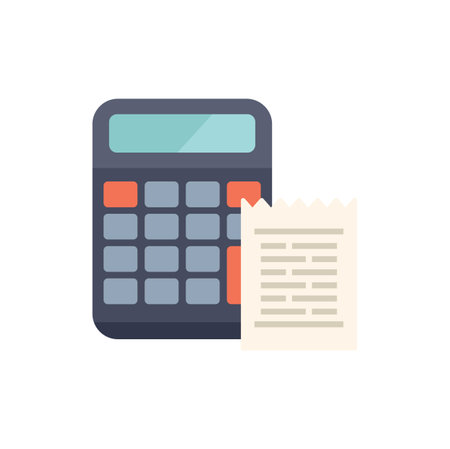1. What Are Property Taxes?
Property taxes are a type of tax that homeowners and landowners pay to local governments in the United States. These taxes are based on the value of real estate, which includes your home, land, or other buildings you might own. Property taxes play a crucial role in funding important local services such as public schools, police and fire departments, road maintenance, parks, and libraries.
Key Definitions
| Term | Definition |
|---|---|
| Assessed Value | The dollar value assigned to your property by a local tax assessor for tax purposes. |
| Mill Rate | The amount of tax payable per $1,000 of assessed value. |
| Tax Levy | The total amount of money a local government needs to collect from property taxes in a given year. |
How Property Taxes Work
Every year, your local government determines how much money it needs to operate and provide community services. Based on this budget, they calculate how much revenue must come from property taxes. Each property is then assessed to determine its value, and your share of the total tax is based on the value of your property compared to all others in your area. The higher your property’s value, the more you’ll pay in property taxes.
Where Do Your Property Taxes Go?
| Local Service | Typical Percentage of Tax Funds Used* |
|---|---|
| Public Schools | 40% – 60% |
| Police & Fire Departments | 10% – 20% |
| Parks & Recreation | 5% – 10% |
| Roads & Infrastructure | 10% – 20% |
| Libraries & Other Services | 5% – 15% |
*Percentages vary by location but give a general idea of how funds are allocated.
An Example of How It Works:
If your home is assessed at $300,000 and your local mill rate is 20 mills (or $20 per $1,000), your annual property tax would be:
$300,000 ÷ 1,000 = 300
300 x $20 = $6,000 per year in property taxes.
2. How Are Property Taxes Calculated?
Understanding the Basics
Property taxes in the United States can feel overwhelming, especially if you’re a new homeowner. The good news is that once you know what factors go into your tax bill, it’s much easier to understand how it all works. In short, property taxes are determined by two key things: the assessed value of your property and the local tax rate set by your city or county.
What Is a Property Assessment?
The first step in calculating property taxes is figuring out how much your home is worth for tax purposes. This process is called an assessment. A local government official—often known as an assessor—determines this value based on factors like:
- The size and condition of your home
- Recent sales prices of similar properties nearby
- Improvements or additions you’ve made (like a new garage or finished basement)
- The overall real estate market in your area
This assessed value may not be the same as what you paid for your home or what you could sell it for today. In some places, assessments are updated every year; in others, it might be every few years.
How Tax Rates Work
Once your property’s assessed value is set, the next step is applying the local tax rate. This rate is usually expressed as a “mill rate” (the amount per $1,000 of assessed value) or as a percentage. Each city, town, or county sets its own tax rate based on their budget needs for schools, emergency services, road maintenance, and other public services.
Example: Calculating Your Property Tax Bill
| Step | Description | Example Amount |
|---|---|---|
| 1. Assessed Value | Your homes value as determined by the assessor | $250,000 |
| 2. Tax Rate | The amount charged per $1,000 of assessed value (e.g., 1.5%) | 1.5% |
| 3. Calculate Tax Owed | Multiply the assessed value by the tax rate ($250,000 x 0.015) | $3,750 per year |
Main Factors That Affect Your Property Tax Bill
- Location: Different states and even neighborhoods have different tax rates and assessment rules.
- Property Type: Residential homes are often taxed at different rates than commercial properties or land lots.
- Exemptions and Deductions: Some homeowners qualify for lower taxes thanks to exemptions for seniors, veterans, or primary residences (“homestead exemption”). Check with your local assessor’s office to see what applies to you.
- Home Improvements: Adding square footage or major upgrades can increase your assessed value—and your taxes.
Why Property Taxes Can Change Year to Year
Your property taxes aren’t fixed forever. They can rise or fall each year depending on changes in your home’s assessed value and adjustments to local tax rates. If your city decides it needs more money for schools or roads, they might raise the tax rate. Or if home values in your neighborhood jump up, so will your assessment—and your bill.
Quick Reference Table: What Impacts Your Taxes?
| Factor | Description |
|---|---|
| Assessed Value | Your homes value for tax purposes; set by the local assessor. |
| Tax Rate | The percentage applied to your assessed value; set by local government. |
| Exemptions/Deductions | Reductions based on age, veteran status, primary residence status, etc. |
| Improvements & Upgrades | Additions or renovations can boost assessed value. |
| Market Conditions | If home values rise locally, so does assessed value over time. |
If you ever disagree with your assessment or think you’re being overcharged, most communities have an appeals process where you can make your case for a lower valuation.

3. Understanding Your Property Tax Bill
What’s on Your Property Tax Bill?
Your annual property tax bill might look confusing at first, but once you know what to look for, it’s actually pretty straightforward. Each line on your bill tells you exactly how your taxes are calculated and where your money is going.
Common Sections You’ll See
| Section | What It Means |
|---|---|
| Assessed Value | This is the value your local assessor assigns to your property. It may be different from your home’s market value. |
| Tax Rate (Millage Rate) | This is the rate used to calculate your property taxes, often shown as a dollar amount per $1,000 of assessed value. |
| Total Tax Due | The total amount you owe for the year based on the assessed value and tax rate. |
| Breakdown by Recipient | This shows how much of your payment goes to schools, city services, county government, libraries, fire departments, etc. |
| Exemptions/Deductions | Any reductions applied to your taxable value, like homestead exemptions or senior citizen deductions. |
| Special Assessments | Extra charges for specific local projects such as street repairs or sewer improvements. |
| Payment Instructions & Due Dates | When and how to pay your bill, plus penalties for late payments. |
How to Read Your Bill Step by Step
- Locate the Assessed Value: This number is crucial—it’s the starting point for all calculations. If you think it’s too high, you can usually appeal it with your local assessor’s office.
- Check the Tax Rate: Multiply the assessed value by the tax rate (sometimes called “millage”). This gives you your basic tax amount before any exemptions or special assessments are added or subtracted.
- Look for Exemptions: Many homeowners qualify for exemptions that lower their taxable value. The most common is the Homestead Exemption for primary residences. There may also be exemptions for seniors, veterans, or people with disabilities. These should be listed as deductions on your bill.
- Add Special Assessments: If there are any additional charges for local improvements or services in your neighborhood, they’ll show up here. Make sure you understand what these fees are funding.
- Total It Up: The final line shows the total property tax due for the year. This is what you need to pay by the specified due date.
Example: Typical Property Tax Bill Breakdown
| Description | Amount ($) |
|---|---|
| Assessed Value of Home | $250,000 |
| Homestead Exemption (-$25,000) | $225,000 (taxable) |
| Total Millage Rate (e.g., $20 per $1,000) | $4,500 (base tax) |
| School District Portion | $2,200 |
| City Services Portion | $1,500 |
| County Services Portion | $800 |
| Special Assessment (Sewer Project) | $100 |
| Total Annual Tax Due | $4,600 |
Common Exemptions and Deductions You Might See
- Homestead Exemption: Lowers taxable value for owner-occupied homes.
- Senior Citizen Exemption: Available if you’re over a certain age (usually 65+).
- Disability/Veteran Exemption: Offered in many areas for eligible homeowners with disabilities or military service.
If You Have Questions About Your Bill…
If anything looks off or you’re unsure about a charge or exemption, reach out to your local tax assessor’s office. They can explain details specific to your city or county and help you apply for any exemptions you might have missed.
4. Appealing Your Property Tax Assessment
Understanding the Appeals Process
If you believe your property tax assessment is too high, you have the right to challenge it. Many homeowners find that their homes assessed value doesnt match its true market value, which can lead to paying more in taxes than necessary. The appeals process is designed to help you correct this situation.
Steps to Appeal Your Property Tax Assessment
1. Review Your Assessment Notice
When you receive your annual property tax assessment notice, check all the details carefully. Make sure your propertys square footage, number of bedrooms and bathrooms, and any improvements are listed correctly.
2. Compare with Similar Properties
Look at recent sales of similar homes in your neighborhood, known as “comparables” or “comps.” This helps you determine if your assessed value aligns with local market trends.
| Property Address | Sale Price | Square Footage | Date Sold |
|---|---|---|---|
| 123 Main St. | $350,000 | 1,800 sq ft | March 2024 |
| 456 Oak Ave. | $340,000 | 1,750 sq ft | February 2024 |
| Your Home | (Assessed Value) | (Your Sq Ft) | (N/A) |
3. Gather Supporting Evidence
Collect documents such as photos of your home (especially if there are issues that might lower its value), recent appraisal reports, repair estimates for damage, and records of sales prices for comparable homes.
4. File an Appeal with Your Local Assessor’s Office
The process for filing an appeal varies by state and county, but generally involves submitting a form along with your evidence before a specified deadline—usually within a few weeks after receiving your assessment notice. Check your local assessors website for specific instructions and deadlines.
Common Documents Needed:
- A copy of your assessment notice
- A letter explaining why you believe the assessment is too high
- Comparable sales data or a recent appraisal report
- Photos and documentation of property condition or discrepancies in the record
5. Attend the Hearing (If Required)
You may be invited to present your case in person or virtually before a review board. Be prepared to explain your evidence clearly and answer any questions.
Tips for a Successful Appeal
- Be organized: Keep copies of all documents and correspondence.
- Meet all deadlines: Late appeals are usually not accepted.
- Stay calm and professional: Focus on facts, not emotions.
- If needed, get help: Some homeowners hire property tax consultants or real estate professionals for assistance.
5. Tips for Managing and Reducing Property Taxes
Property taxes are a significant expense for homeowners across the United States, but there are practical ways you can manage and potentially reduce your tax burden. Understanding your options and knowing where to look for savings is key. Below, we break down some of the most effective strategies.
Review Your Property Tax Assessment
Your local government assesses your homes value to determine your property taxes. Sometimes, mistakes happen or values can be overestimated. Make sure to:
- Request a copy of your assessment from your local assessor’s office.
- Compare it with similar homes in your neighborhood.
- File an appeal if you believe your property has been overvalued.
Take Advantage of Exemptions and Deductions
Many states and local governments offer property tax exemptions or reductions for qualifying homeowners. Here are some common types:
| Exemption Type | Who Qualifies? | Potential Savings |
|---|---|---|
| Homestead Exemption | Primary residence owners | Lowers taxable value of home |
| Senior Citizen Exemption | Homeowners above a certain age (varies by state) | Partial or full exemption on property taxes |
| Veterans Exemption | Qualified military veterans or their spouses | Reduces assessed value or offers specific dollar amount off taxes |
| Disability Exemption | Homeowners with disabilities | Lowers taxable value; sometimes eliminates tax entirely |
How to Apply for Exemptions
- Contact your county or city assessor’s office.
- Complete any required application forms before the annual deadline.
- Provide documentation proving eligibility (such as age, disability status, or veteran status).
Participate in Local Tax Relief Programs
Cities and counties may offer programs specifically designed to help reduce property taxes for residents facing financial hardship. Examples include:
- Tax Deferral Programs: Delay paying property taxes until you sell the home or pass away (often available for seniors).
- Circuit Breaker Programs: Provide tax credits or refunds based on income limits.
- Agricultural or Conservation Use Valuations: Lower assessments for properties used as farms or preserved land.
Where to Find More Information
- Your local tax assessor’s website usually lists all available programs and deadlines.
- The U.S. Department of Housing and Urban Development (HUD) provides resources for seniors and low-income homeowners.
- Your state’s department of revenue often has guidance for deductions and credits.
Avoiding Penalties and Keeping Records Up-to-Date
- Pay On Time: Late payments can result in hefty penalties or even foreclosure proceedings in severe cases.
- Update Your Records: Notify the assessor’s office if you remodel, add new structures, or make changes that could impact your home’s value.
- Keep Documentation: Store proof of exemptions, appeals, payments, and correspondence in case questions arise later.
If you make use of these tips, you’ll have better control over your property tax obligations and might even lower your annual bill. Stay proactive—local rules change frequently, so check with officials each year to make sure you’re getting every benefit available.


